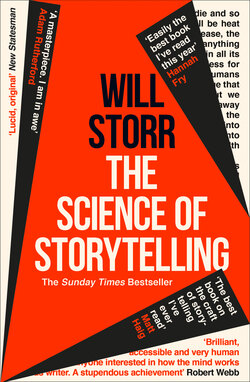Читать книгу The Science of Storytelling - Will Storr, Уилл Сторр - Страница 13
1.4
ОглавлениеThe brain’s propensity for automatic model-making is exploited with superb effect by tellers of fantasy and science-fiction stories. Simply naming a planet, ancient war or obscure technical detail seems to trigger the neural process of building it, as if it actually exists. One of the first books I fell in love with as a boy was J.R.R. Tolkien’s The Hobbit. My best friend Oliver and I obsessed over the maps it contained – ‘Mount Gundabad’; ‘Desolation of Smaug’; ‘West lies Mirkwood the Great – there are spiders.’ When his father made photocopies of them for us, these maps became the focus of a summer of blissful play. The places Tolkien sketched out, on those maps, felt as real to us as the sweet shop in Silverdale Road.
In Star Wars, when Han Solo boasts that his ship the Millennium Falcon ‘made the Kessel Run in less than twelve parsecs’ we have the strange experience of knowing it’s an actor doing gibberish whilst simultaneously somehow feeling as if it’s real. The line works because of its absolute specificity and its adherence to what sounds like truth (the ‘Kessel Run’ really could be a smuggling route while ‘parsecs’ are a genuine measurement of distance, equivalent to 3.26 light years). As ridiculous as some of this language actually is, rather than taking us out of the storyteller’s fictional hallucination, it gives it even more density.
By merest suggestion, the Kessel Run becomes real. We can imagine the dusty planet on which the route begins, hear the whine and blast of the engines, feel the hustle and violence of the piss-stinking smuggler’s haunts. This is just what happens in Bladerunner’s most famous scene, in which the replicant Roy Batty, on the edge of death, tells Rick Deckard, ‘I’ve seen things you people wouldn’t believe. Attack ships on fire off the shoulder of Orion. I watched C-beams glitter in the dark near the Tannhäuser Gate.’
Those C-beams! That gate! Their wonder lies in the fact that they’re merely suggested. Like monsters in the most frightening horror stories, they feel all the more real for being the creations, not of the writer, but of our own incessant model-making imaginations.
